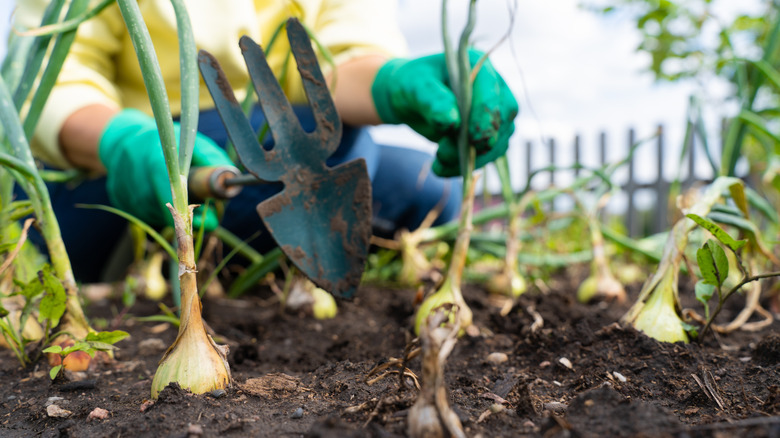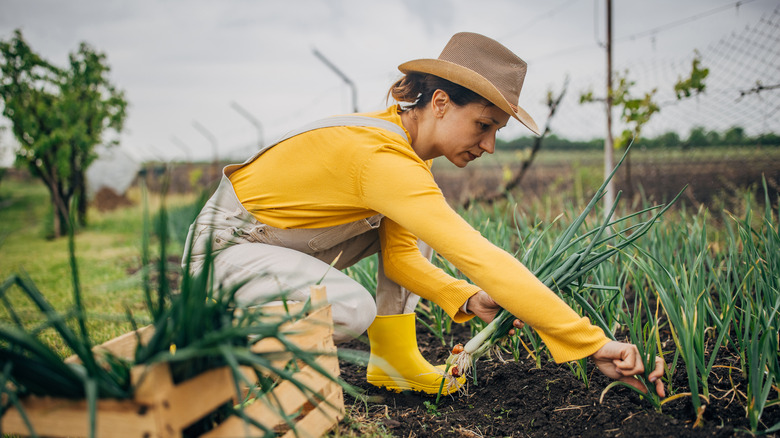Signs That The Onions In Your Garden Are Ready To Harvest (& The Best Way To Do It)
For many gardeners, the anticipation of harvesting onions is almost as satisfying as actually getting to eat them. You've grown the onion bulbs from tiny seeds or sets, watered them carefully, and watched their green tops stretch tall throughout the season. But knowing the exact moment to dig them up can feel a little uncertain — and it often requires a carefully trained eye. Harvesting too soon can leave you with undersized bulbs that lack flavor, while waiting too long can risk splitting, rotting, or sprouting from your plants. Fortunately, onions give a series of subtle but reliable signs that they've reached peak maturity, and once you learn to spot them, you'll feel more confident in the timing of your harvest.
The clearest sign is the most visible one: the tops of your onion plants. Onions grow vigorously upright when still maturing, but as they finish their life cycle, their energy shifts downward into the bulbs. The once green, rigid stalks begin to turn slightly yellow, wilt, and collapse onto the soil. If half or more of your onion tops have flopped over, it's usually time to start planning your harvest. You can examine the neck of your plant — the part where the stalk meets the bulb. A soft, pliable neck that no longer feels thick suggests that growth has slowed to a halt. In addition, check the bulbs themselves: a firm feel, rounded shape, and visibly dry outer skin forming at the base are also positive signs of maturity. At this point, the onions are no longer growing in size but are instead preparing for storage. By waiting for these natural indicators, you'll ensure that your harvest is flavorful, substantial, and ready to last well beyond the growing season.
Tips for harvesting your onion crop properly
Harvesting onions isn't just about pulling them from the ground — it's about ensuring that they will be flavorful and long-lasting. After lifting them out of the soil with a spade or garden fork, resist the temptation to wash the bulbs with water, since added moisture can encourage mold growth and rot. Instead, allow the soil to naturally dry and brush off the excess dirt with your hands once the skins have cured. Curing the vegetable for storage is the single most important step in making sure your onions don't spoil too quickly. Spread the bulbs out in a well-ventilated, shaded area like a covered porch or shed. Good airflow is key, so avoid stacking them in buckets or piling them together. After about two to four weeks, the outer skins should be papery and the necks fully dried, making them ready for long-term storage and use.
Storage techniques can also make or break your onion harvest. For the longest shelf life, store your onions in a cool, dry, and dark place (try this storage hack to keep onions fresh). Mesh bags or crates can work to keep onions separated and airy, preventing them from molding. Avoid keeping them in plastic bags, which can trap moisture and cause premature sprouting. It's also smart to try and separate your onion varieties — sweet onions, for example, generally don't store as long as pungent varieties like red or yellow onions. Use up your sweeter onions first while saving the storage onions for later months. By harvesting carefully, curing properly, and storing wisely, you'll be able to enjoy your garden's bounty well into the colder months.

